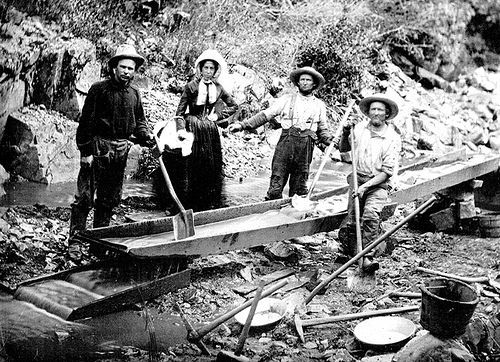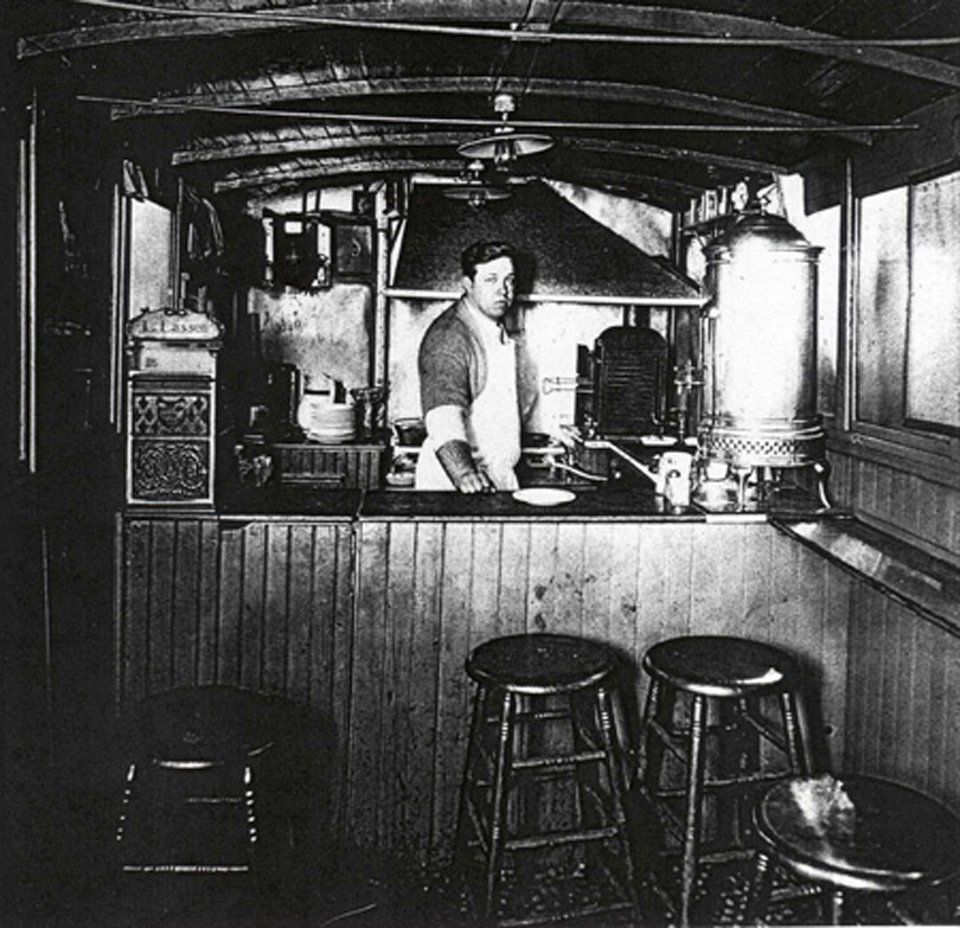ASSIGNMENTS - FILM 5
Film 5: Freedom and future
The many Danish immigrants each found their own way of living their new lives. By far, most lived ordinary lives as farmers or urban laborers. But for some, America was a chance to change their social status, exchanging a life of poverty for one of wealth and renown.
Assignments - film 5
These assignments are about three Danish immigrants who, thanks to their diligence and courage to seek new challenges, succeeded at making a living in America.
These assignments are about three Danish immigrants who, thanks to their diligence and courage to seek new challenges, succeeded at making a living in America.
Assignment 1: The Gold Rush
Gold, gold, gold. Across the country, dreams of great and sudden wealth are growing. As “gold fever” breaks out, thousands of primarily young men go to dig for gold. They leave fields half-plowed and houses half-built, because when the fever hits, one can only think of shoveling and mining.
The Danish immigrant Jens Storm Smidt is a peasant who quickly leaves his land and travels to the “Wild West” and the new mining towns in California. He finds a little gold and can settle down as a miller.
1. Investigate the techniques the goldminers used to find gold. (Read this article: https://en.wikipedia.org/wiki/California_Gold_Rush)
2. With the available techniques, who had the best chance of finding gold? What technique do you think Jens Storm Smidt used?
3. Describe the conditions in a goldmining town. What kind of work was required to be a goldminer?
4. Do you know of any other discoveries of sudden wealth that have caused people to travel to new places?
5. Are there opportunities to pursue the dream of sudden wealth today? What are the chances of attaining such wealth, and what possible negatives consequences are there to pursuing it?
Watch this film about the Gold Rush: www.youtube.com/watch?v=gDkqvqqjMAA

Assignment 2: Poverty’s Photographer
Jacob Riis left Denmark when he could not be with the woman he loved. He sought happiness in America instead. But happiness had to wait. For years he had to take small jobs and he lived in poor conditions.
Then he began to photograph the squalor he saw around him, and got a job as a journalist in New York. His photos, which documented how many Americans were living in extreme poverty, gained him attention and fame. His most well-known book was called How the Other Half Lives.
1. Search for photos from How the Other Half Lives by Jacob Riis.
2. Select five photos that you think are interesting and make a collage of these. Feel free to write or draw on the collage, and give it a title.
3. Take a look at the photos here: www.dailymail.co.uk/news/article-2508324/Gilded-New-York--book-lifts-lid-Vanderbilt-mansion-late-19th-century.html. These are structures and homes that New York’s richest inhabitants were building around the same time that Jacob Riis was photographing the city’s slums. Make a similar collage of the city’s wealth.
4. Discuss the factors that determine where an immigrant and their descendants might end up living and why.
Assignment 3: The burger
The restaurant “Louis’ Lunch,” in New Haven, Connecticut, is where Danish immigrant Louis Lassen created America’s first hamburger in 1900—at least according to the Library of Congress, which in 2000 named Louis’ Lunch the “Home of the Hamburger.”
Louis Lassen was a blacksmith who emigrated from Copenhagen in 1886 to settle down in America as a shopkeeper. In 1895 he converted his horse-drawn carriage into a diner on wheels. One day in the year 1900, a businessman came to buy his lunch. He didn’t want to wait for Lassen’s specialty, “Steak Dinner.” He wanted something quickly, to go. Lassen chopped some leftover beef and shaped it into a ball. He cooked it and stuck it between two pieces of toasted bread with some tomato and onions. The customer was happy, and a Danish immigrant had just created what became an American icon—the hamburger.
1. American food culture is characterized by the many different nationalities who immigrated to the United States. Which Danish food habits do you think were brought to America?
2. Can you think of examples of American food that have roots in other countries?
3. If you had to leave your country and not return, which five food items would you choose to bring with you?
4. What role do you think food plays in culture, and why is it worth discussing in relation to immigration?
5. Interview an immigrant or a descendant of immigrants about his/her family food traditions. Which habits or traditions have roots in the original culture, and how have they changed in the new country?
6. Try making America’s first hamburger yourself (recipe and instructions here: www.youtube.com/watch?v=P0DnZeLrHVE).

Louis Lassen in burgerbar in Connecticut.

